You want fewer urgent dashes to the bathroom, less dribbling, and a calmer bladder despite an enlarged prostate. Pelvic floor training won’t shrink your prostate or fix a weak stream by itself, but it can give you real control over urgency, leaks, and those 2 a.m. wake-ups. Expect noticeable changes in 4-6 weeks if you practice with intent, pair it with smart bladder habits, and avoid the classic mistakes that make Kegels feel useless.
- TL;DR
- What improves: urgency, frequency, dribbling after voiding, and sometimes nocturia. What doesn’t: the obstruction from an enlarged prostate.
- Plan: 5-10 minutes/day of targeted contractions (endurance + quick flicks) plus bladder training. Most men notice gains by week 4-6; bigger changes by 8-12 weeks.
- Evidence-backed: Behavioral therapy (pelvic floor muscle training + bladder training) is first-line for storage symptoms in men (AUA/SUFU 2024 OAB guideline; NICE CG97 update).
- Best practice: Do not train while peeing; coordinate with breathing; stop clenching your abs and glutes; progress gradually.
- Combine with care: Keep your BPH meds; this training is additive, not a replacement. If you have retention, pain, or recent surgery, ask your clinician first.
Why pelvic floor work helps with BPH symptoms (and what it won’t do)
Benign prostatic hyperplasia (BPH) narrows the urethra and can trigger lower urinary tract symptoms (LUTS): urgency, frequency, weak stream, incomplete emptying, and nocturia. The “storage” side of those symptoms-urgency, frequency, and leaks-often improves when the pelvic floor learns to fire on cue and the bladder calms down. The “voiding” side-weak flow and obstruction-usually needs medical management.
Think of your pelvic floor as a sling of muscles at the base of your pelvis. When they contract at the right time, they compress the urethra and send a reflex message to the bladder to relax. That’s exactly what you want when an urgent wave hits in a meeting or on the highway. When they relax fully at the right time, they let you empty more comfortably and reduce straining.
Here’s the honest scope of benefit you can expect when you train properly:
- Urgency control: Better ability to “ride out” an urge until you reach a toilet without leaking.
- Frequency: Fewer daytime trips (modest but meaningful), especially when paired with bladder training.
- Nocturia: Often down by about half a trip per night when you nail the routine and improve evening habits.
- Post-void dribble: Less leakage after urinating thanks to stronger, better-timed contractions and a quick “finish squeeze.”
What pelvic floor training will not do:
- Shrink your prostate.
- Fix a weak stream caused by obstruction.
- Replace alpha-blockers, 5-alpha-reductase inhibitors, or procedures if you need them.
Why am I so confident saying this? Because major guidelines put behavioral therapies-including pelvic floor muscle training (PFMT) and bladder training-at the front of the line for storage symptoms. The American Urological Association/SUFU 2024 guideline on overactive bladder recommends PFMT and bladder training as first-line. NICE’s LUTS in men guidance (CG97, updated) supports bladder training and lifestyle measures for storage symptoms. The International Continence Society also recognizes PFMT for urgency suppression. Cochrane reviews of bladder training show fewer voids per day and less leakage in many patients with overactive bladder symptoms. BPH adds a mechanical component, but the storage-symptom playbook still applies.
| Symptom Target | Typical Change with PFMT + Bladder Training | When You Notice | Notes |
|---|---|---|---|
| Urgency episodes | Fewer and milder; better control during urges | 4-6 weeks | Behavioral therapy is first-line for storage symptoms (AUA/SUFU 2024; ICS) |
| Daytime frequency | About 1 fewer void/day when combined with bladder training | 4-8 weeks | Consistent with bladder training data in OAB (Cochrane 2018) |
| Nocturia | Often ~0.5 fewer trips/night | 4-8 weeks | Improves more when you adjust evening fluids/caffeine |
| Post-void dribble | Noticeable reduction with a “finish squeeze” routine | 2-4 weeks | Technique matters more than raw strength |
| Weak stream | Minimal change from PFMT alone | - | Address prostate obstruction with your clinician |
Bottom line: use PFMT to master storage symptoms and pair it with your medical plan for the obstruction piece.
Exactly how to do pelvic floor training for BPH (step-by-step, no fluff)
If you’ve tried Kegels and felt nothing, you were probably squeezing your abs, butt, or breath-holding. Here’s a clean, simple way to find the right muscles and train them the right way.
First, find the right muscles once (but don’t train this way regularly): When you’re midstream, briefly try to stop or slow the flow. The muscles that lift and close are your pelvic floor. Feel that? Good. Now don’t keep practicing on the toilet; that habit can confuse your bladder.
How a correct contraction should feel:
- Lift-and-hold sensation at the base of the pelvis, as if you’re stopping gas and shortening the penis slightly.
- No butt clench, no stomach crunch, no thigh tension.
- Normal breath. If your ribs are frozen and face is red, it’s wrong.
Breathing cue that helps: Inhale quietly through your nose to expand your belly and ribs; exhale gently through pursed lips as you lightly lift the pelvic floor. Keep shoulders loose.
Starter routine (weeks 1-2):
- Position: Begin lying down or reclined. Bend knees, feet flat.
- Endurance holds: Contract at 30-50% effort and hold for 5 seconds. Rest 5-10 seconds. Do 8-10 reps.
- Quick flicks: 10 rapid 1-second squeezes, full release between each.
- Breathing: One soft breath per second during flicks; don’t hold your breath.
- Frequency: Do this sequence twice daily (morning/evening).
Progression (weeks 3-6):
- Increase endurance holds to 8-10 seconds. Keep the same rest time. Do 10 reps.
- Quick flicks: 2 sets of 10.
- Positions: Add sitting and standing. Gravity makes it harder-and more functional.
- Add the “urge drill” (see below) during real-life urges.
Performance tips that change everything:
- Less is more: 30-40 total contractions/day is plenty. Quality beats volume.
- Full release: The relax phase is half the exercise. If you’re always “half on,” you’ll just end up tight and tired.
- Use 30-50% effort: Maximal contractions recruit the wrong helpers. Lighter, precise squeezes win.
- Habit stack: Anchor sessions to daily routines-after brushing teeth, mid-lunch break, before bed.
The urge drill (your emergency brake):
- Freeze: Stop moving. Don’t rush to the toilet.
- Exhale: Slow breath out to drop anxiety.
- Three quick flicks: 3 rapid pelvic floor squeezes, then a 10-second endurance hold at 30-40% effort.
- Distract: Count backward by 7s or press your tongue gently to the roof of your mouth.
- Wait until the wave eases, then walk to the bathroom at a normal pace.
This sequence taps a reflex that quiets the bladder. It feels a little goofy at first. Then it saves you a dozen sprints a week.
Reducing post-void dribble (the “finish squeeze” routine):
- After you think you’re done, wait 5-10 seconds.
- Do two quick flicks, then a 5-second gentle hold.
- Lean slightly forward and give the base of the penis a light upward press through underwear to clear the urethra (subtle, not aggressive).
How to know you’re getting it right:
- During a correct hold, the lower belly stays soft. If it domes, you’re recruiting abs.
- No breath-holding. Try speaking a sentence during the hold-if you can’t, the effort is too high.
- Urgency waves feel more “flat-top” than “spiky” after a couple weeks of practice.
When to add more:
- Week 6-8: Add light functional drills-5 quick flicks before lifting something heavy, or before you stand after sitting a while.
- Week 8-12: Maintain 1 session/day plus in-the-moment urge drills. Most men can shift to maintenance at this point.
Who should get extra help: If you feel pelvic pain, burning, a constant need to urinate with tiny outputs, or you can’t relax the floor, you may have pelvic floor overactivity. That needs a different start-down-training, breathing, and expert coaching-before strengthening. A pelvic floor physical therapist can assess this quickly.
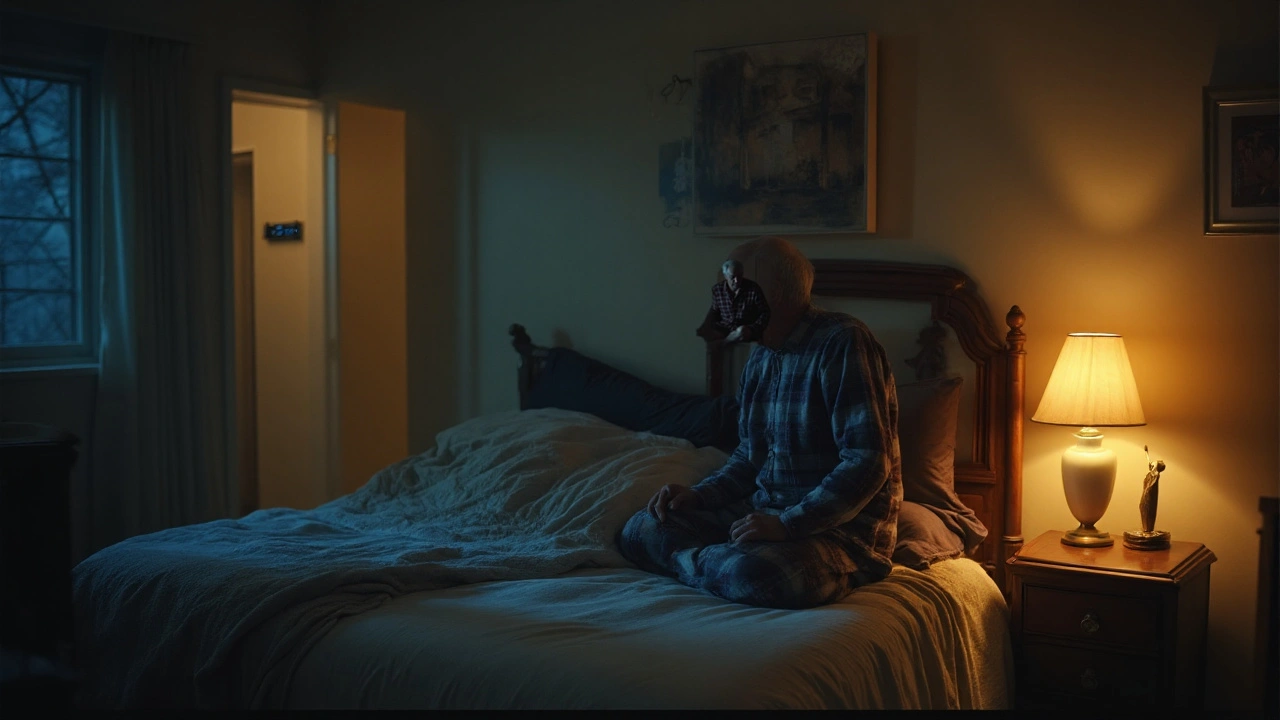
Make it work in real life: combine training, meds, and habit tweaks
This is the stack that helps most men with BPH hit real-world wins:
- Stay on your BPH meds. Alpha-blockers (like tamsulosin) and 5-alpha-reductase inhibitors (like finasteride/dutasteride) manage the obstruction. PFMT adds urgency control. They’re complementary.
- Bladder training basics: Space daytime voids to roughly 2.5-3 hours where possible. Use the urge drill to avoid “just in case” trips that teach your bladder to be jumpy.
- Fluids: Aim for pale yellow urine. Front-load most fluids before 6 p.m. If you’re up twice at night, try trimming 250-500 mL after dinner.
- Caffeine and alcohol: Both stimulate the bladder. Many men find halving coffee or switching to half-caf in the morning shaves off one extra bathroom trip.
- Constipation: A backed-up bowel squashes the bladder and sabotages your plan. Get 25-30 g/day of fiber from food, hydrate, and consider a gentle stool softener if needed under clinician guidance.
- Movement: A 20-30 minute daily walk reduces urgency for a lot of guys-better blood flow, less pelvic tension.
After procedures (UroLift, Rezūm, TURP, Aquablation): Ask your urologist when to restart pelvic floor work. Many men can resume gentle holds and urge drills once acute irritation settles, then rebuild endurance. The goal after procedures is comfort and control, not max strength.
Timeline to results (what to expect):
- Week 1-2: You’re mostly learning to find the right muscles and relax fully.
- Week 3-4: Urge drills start to “stick”; some reduction in urgency and fewer dribbles.
- Week 5-6: More reliable delay under pressure; frequency often eases by a notch.
- Week 8-12: Changes feel baked in; you can maintain with shorter sessions.
Evidence notes, plain English version:
- The AUA/SUFU Overactive Bladder Guideline (updated 2024) lists pelvic floor muscle training and bladder training as first-line therapy for storage symptoms.
- NICE’s guidance on LUTS in men (CG97, updated) supports bladder training and lifestyle measures for storage symptoms alongside medical management of obstruction.
- Cochrane reviews of bladder training show fewer voids/day and fewer leaks in overactive bladder populations-relevant because many men with BPH have overlapping storage symptoms.
- Post-prostate surgery incontinence has robust data for PFMT; while BPH is different, urgency suppression mechanisms overlap.
Checklists, weekly plan, and a simple progress tracker
Quick-start checklist (stick this on your fridge):
- Find the right muscles once (midstream pause), then train out of the bathroom.
- Two daily sessions: one set of endurance holds (8-10 reps) + one set of quick flicks (10-20 total).
- Do the urge drill during real urges instead of running for the toilet.
- Don’t clench your butt, abs, or hold your breath.
- Space daytime voids; trim evening fluids; watch caffeine/alcohol.
- Log your wins: urgency waves you beat, bathroom trips you skipped, dry arrivals.
Weekly plan (first 6 weeks):
- Mon-Fri: 5-10 minutes each morning and evening. Mix holds and quicks.
- Sat-Sun: One formal session + do an urge drill when needed.
- Walk 20-30 minutes most days; add gentle hip flexor and adductor stretches if you sit a lot.
- Evenings: Keep fluids modest; stop big drinks 2-3 hours before bed.
Progress tracker you can fill in on your phone notes app:
- Baseline today: IPSS (International Prostate Symptom Score) if you have it, or simply note: daytime trips, night trips, urgency episodes/week, leaks/week.
- Week 2: Update the same numbers. Any change in urge control?
- Week 4: Update. Can you delay 5-15 minutes when an urge hits?
- Week 8: Update. Decide whether to maintain or adjust with your clinician.
Rules of thumb to avoid setbacks:
- Never train to failure. Shaky, breath-held squeezes teach the wrong pattern.
- Skip toilet “just in case” trips, except before long drives or sleep.
- A little soreness or fatigue is fine; pain or burning is not-ease off and get checked.
- Don’t keep a low-level squeeze all day. Train, then live relaxed.
When to get more support:
- Your stream is worsening or you get frequent urinary retention-talk to your urologist; that’s not a training problem.
- You feel pelvic pain or can’t relax the floor-see a pelvic floor physical therapist for down-training and guided recovery.
- After a prostate procedure, you’re unsure when to restart-ask for a targeted PFMT plan.
| Priority | Action | Why It Helps | Time Cost |
|---|---|---|---|
| High | Endurance holds (8-10 reps) | Builds steady control for delaying urges | 3-4 min |
| High | Quick flicks (10-20 reps) | Trains fast response to sudden urges and dribbles | 2-3 min |
| Medium | Urge drill during waves | Turns skill into real-world victories | 30-60 sec/urge |
| Medium | Evening fluid timing | Reduces nocturia load | Habit change |
| Medium | Daily walk | Less pelvic tension, better bladder calm | 20-30 min |
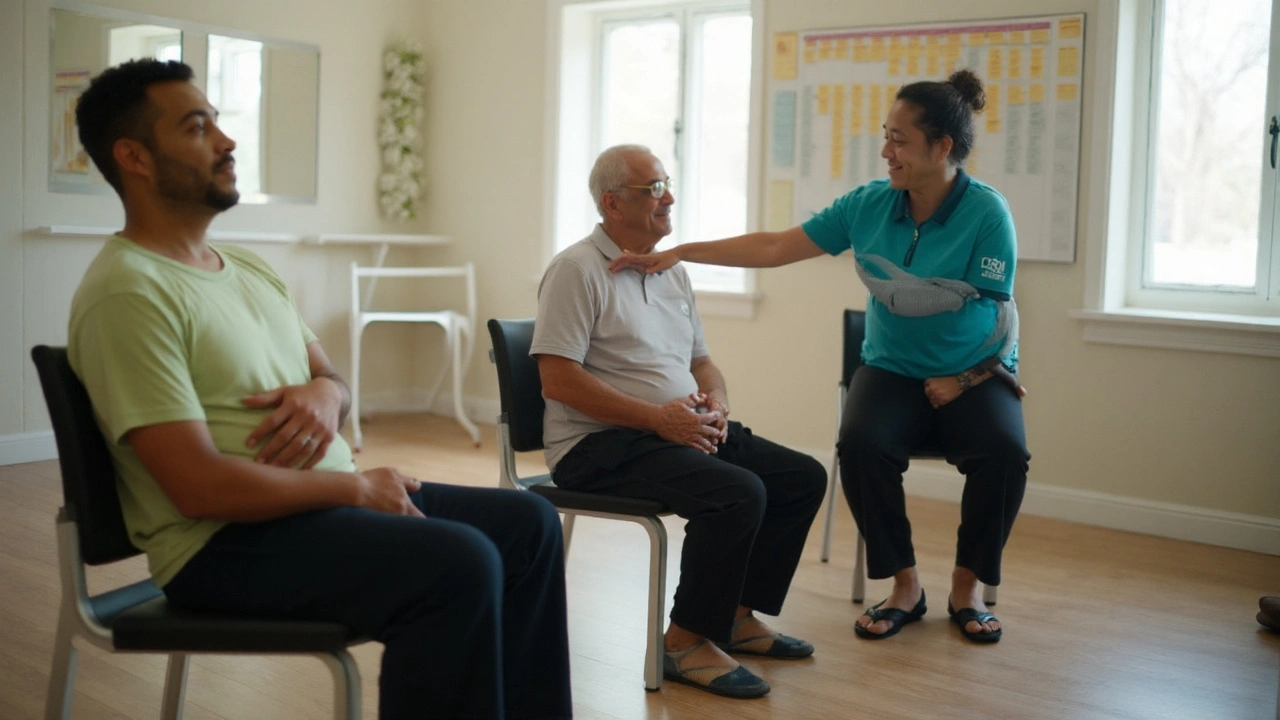
FAQ, next steps, and troubleshooting
Will these exercises shrink my prostate? No. They don’t change prostate size. They strengthen and coordinate muscles that control the urethra and help quiet bladder urges. Keep your medical plan for the prostate itself.
Can pelvic floor work worsen urinary retention? If you constantly clench and never relax, yes, you can feel “tight” and empty poorly. That’s why full release and gentle intensity matter. If you have diagnosed retention or a high post-void residual, coordinate with your clinician.
Is it safe if I have prostatitis? During acute prostatitis, let inflammation settle first. Later, start with breathing and down-training before adding gentle holds. A pelvic floor physical therapist can guide this safely.
Should I use gadgets or apps? Biofeedback with a trained therapist can speed up learning. For home use, simple timers and habit trackers work well. Be cautious with generic “Kegel devices”-most are built for female anatomy and don’t translate directly for men.
How many reps per day? 30-40 well-executed contractions (mixed holds and quicks) is plenty. More is not better if quality drops.
When should I see progress? Most men feel some control gains in 4-6 weeks with daily practice, then steadier improvements by 8-12 weeks.
Do I practice while peeing? Only once to identify the muscles. Frequent stop-start training can confuse bladder signaling.
What if my main issue is weak stream? Pelvic floor training won’t fix the obstruction. Keep working with your urologist on medications or procedures. Still, urgency control and dribble reduction are worth the effort.
What if sitting all day makes me worse? Long sitting tightens hips and your pelvic floor. Break every 45-60 minutes to stand, walk for 2 minutes, and do 5 gentle belly breaths. Add a brief hip flexor stretch twice daily.
Next steps if you’re a self-starter:
- Download an IPSS form or jot your symptom baseline in your notes app.
- Set two daily 5-minute reminders. Do holds + quicks at each alarm.
- Practice the urge drill once daily even without an urge so it becomes automatic.
- Review progress at week 4; tweak fluid timing and caffeine if needed.
Next steps if you’re already on meds but still have urgency:
- Keep your alpha-blocker/5-ARI as prescribed.
- Add bladder training (2.5-3-hour spacing) and the urge drill.
- Tell your clinician you’re adding PFMT; ask about antimuscarinics or beta-3 agonists if urgency remains high.
Next steps after a procedure (UroLift, Rezūm, TURP, Aquablation):
- Wait for your surgeon’s green light.
- Start with gentle 3-5 second holds, 5-8 reps, once daily.
- Layer in urge drills as irritation fades, then build to the full plan over 4-6 weeks.
Troubleshooting common problems:
- I feel it in my abs and butt, not the pelvic floor: Reduce effort to 30-40%. Place a hand on your belly and one on your glute; if they tense, reset. Exhale softly as you lift.
- My urges spike at the door or key-in-lock: Do the urge drill before you reach the door. Stand still, three quick flicks, then walk in slowly. Preempt the trigger.
- I’m up twice a night: Stop big drinks 2-3 hours before bed, avoid late caffeine/alcohol, empty once calmly using a gentle double-void (wait 30-60 seconds, try again) if your clinician approves.
- Nothing is changing after 6 weeks: Verify your technique with a pelvic floor PT. Consider adding supervised biofeedback. Recheck with your urologist to optimize meds or reassess obstruction.
If you do one thing today, make it this: schedule two five-minute blocks for practice and commit to the urge drill the next time your bladder tests you. It’s a small time bet with a big quality-of-life payoff.
One last clarity check: this guide focuses on pelvic floor exercises for storage symptoms in men with BPH. Keep working with your clinician on the prostate and flow side of the equation. The combo is where men get the best results.

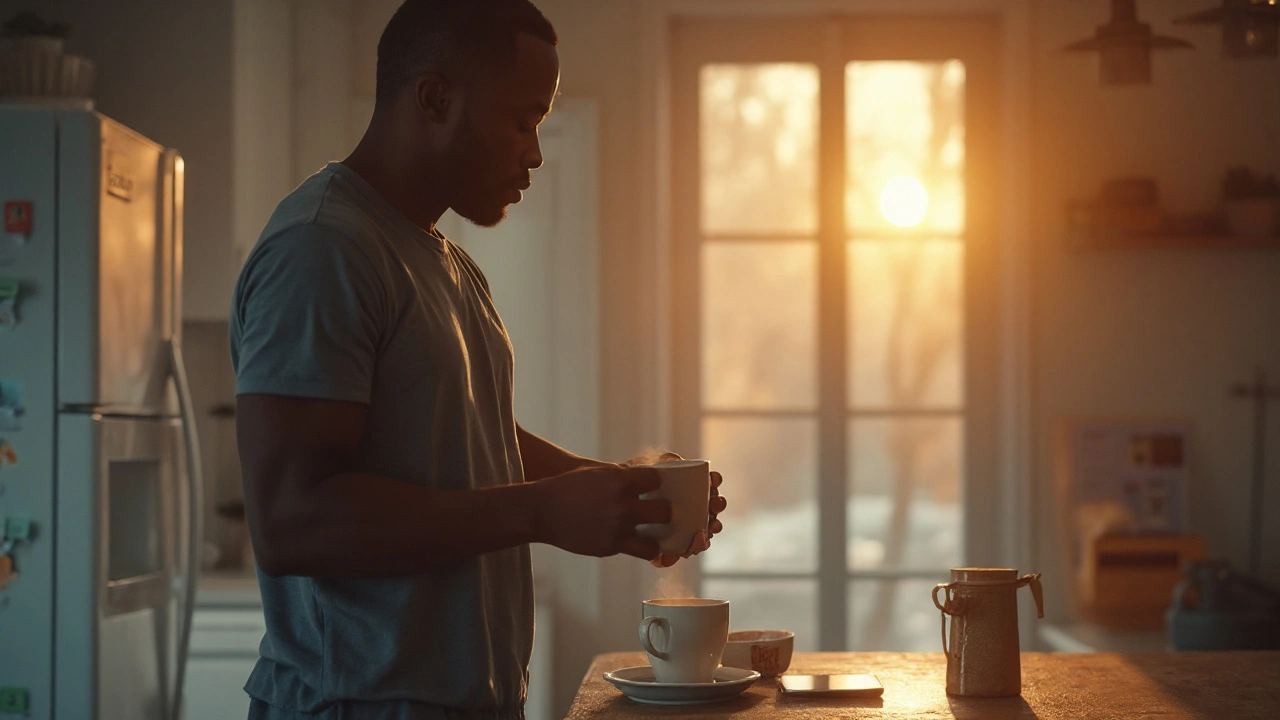
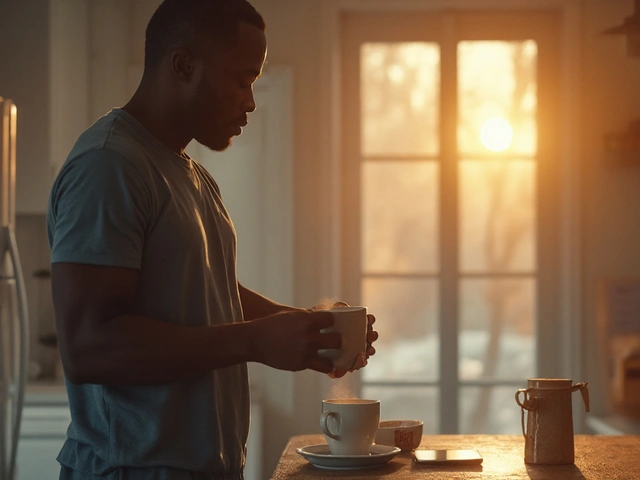

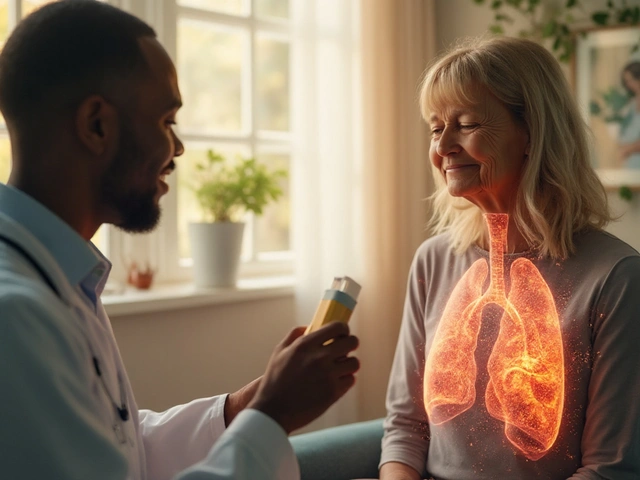



Comments
Ever wonder why we chase quick fixes when the real power lives in a tiny muscle group? The pelvic floor is like the unsung hero of daily life, and learning to speak its language can change evenings from frantic to calm 😌. It’s weird how a few seconds a day can rewrite the script of urgency and dribble, almost like rewiring a nervous system. Sure, it won’t shrink that prostate, but it definitely messes with the habit loops that keep you up at 2 a.m. Keep the focus, trust the process, and the bathroom trips will start behaving. 🌟
Use timed holds + quick flicks; schedule twice daily; track voids. Improves urgency, frequency, nocturia.
Wow, what a practical roadmap!!! The step‑by‑step guide is crystal clear, and the urge‑drill feels like a secret weapon, especially when you’re stuck in a meeting!!! Keep it simple, stay consistent, and watch those night‑time trips melt away!!!
Listen up, bros-don’t half‑ass the holds, push the 30‑50% effort and breathe right! If you slack, you’ll never see results, and the whole thing’s a waste of time! Hit those two sessions every day, track progress, and you’ll own your bladder like a champ!
There is something almost poetic about mastering a muscle you never even knew you had, especially when that muscle becomes the gatekeeper of your comfort and confidence. The guide starts with a simple analogy-your pelvic floor as a sling-turning a clinical concept into a vivid image that sticks in the mind like a mantra. By the time you get to the “urge drill,” you’re not just learning a technique; you’re cultivating a reflex that can calm the storm of a sudden bladder surge. Each “quick flick” feels like a tiny, deliberate flick of a switch, and the endurance holds become meditative pauses that teach your nervous system patience. The progression from lying down to standing mirrors the natural increase in functional demand, ensuring that the gains you make are transferable to everyday life. Remember, the key isn’t raw strength but coordinated timing-lifting without clenching abs or buttocks, breathing naturally, and releasing fully. The tables of expected changes give you concrete milestones: fewer urgent episodes at four weeks, modest reductions in daytime trips by six to eight weeks, and a noticeable dip in nocturia thereafter. It’s reassuring to see the evidence base-AUA, NICE, Cochrane-lending credibility to what could otherwise feel like a DIY hobby. The checklist at the end acts like a personal contract, a visual reminder that keeps you honest when motivation wanes. And the fluid‑timing hacks, like front‑loading drinks before 6 p.m., address lifestyle factors that often sabotage even the best training plan. The emphasis on avoiding “just‑in‑case” trips is a behavioral nudge that re‑educates the bladder to be less jumpy, a subtle but powerful shift. Even the note on post‑procedure timing shows sensitivity to real‑world concerns, ensuring that readers don’t overstep medical boundaries. The language stays friendly yet authoritative, never slipping into medical jargon that would alienate the layperson. One can almost feel the author’s confidence as they say, “If you do one thing today, make it this,” pushing you toward immediate action. The blend of science, practical tips, and motivational nudges creates a holistic toolkit that feels both doable and evidence‑driven. In short, this isn’t just a list of exercises; it’s a roadmap to reclaiming autonomy over one of the most private aspects of daily life, and that’s something worth every minute you invest. 🌱
Honestly, most of these “quick flicks” sound like a gimmick for men who can’t stick to a medication schedule. If you’re still splurging on supplements and gadgets, you’re just buying a placebo. The real issue is the prostate size-no amount of contraction will unblock that pipe.
While the size factor matters, the behavioral component can still cut down trips and improve quality of life. Many patients report fewer nighttime awakenings after consistent PFMT.
The training isn’t a magic fix, but it’s not a gimmick either-proper technique can re‑train bladder reflexes. Ignoring it means missing out on a low‑cost complement to meds.
Start with two five‑minute sessions a day and you’ll notice calmer evenings.
That’s the spirit, but don’t expect overnight miracles; consistency over weeks is the real hero here. Many people think a few minutes will instantly stop nocturia, which is unrealistic. The science backs gradual improvement, and your bladder will thank you as patterns shift. So keep the log, stay patient, and let the data speak.
The progress tracker idea is solid; writing down baseline numbers makes any improvement visible. Pairing the tracker with fluid‑timing tweaks creates a feedback loop that guides adjustments. Just remember to review the data every two weeks and tweak the routine as needed.
Exactly! A simple spreadsheet or notes app does the trick, and you’ll stay motivated when you see the numbers drop. 😊
From a cultural perspective, many men see pelvic exercises as a taboo, but the evidence shows it is universally beneficial. It is important to approach the topic with sensitivity while emphasizing the medical backing. Avoiding unnecessary emojis keeps the focus on the data and respects diverse audiences.
Sure, but you’ve also got to admit that the medical community sometimes hides behind jargon to keep the public complacent-big pharma loves you to think pills are the only answer. The “first‑line” claim of PFMT might be a subtle push to sell “premium” biofeedback devices. Anyway, the guidelines are solid, but stay skeptical of any single‑source recommendation.
Look, the conspiracy angle is entertaining, but the data from multiple independent trials is hard to dismiss. Aggressive marketing doesn’t erase the fact that targeted muscle training reduces urgency episodes. If you ignore the evidence because of suspicion, you’re doing yourself a disservice. Balance healthy skepticism with open‑mind acceptance of proven therapies. Ultimately, personal health wins over hidden agendas.